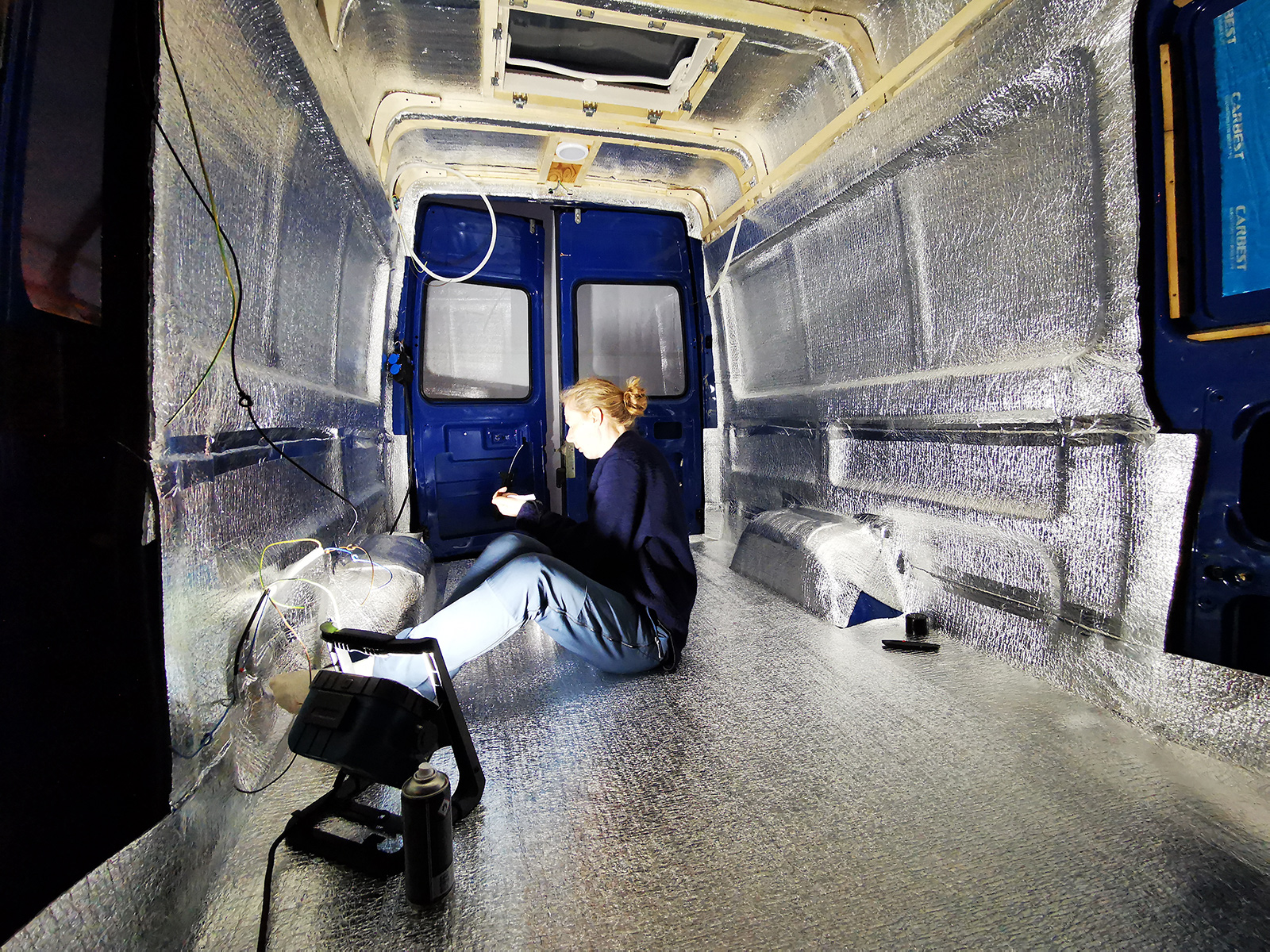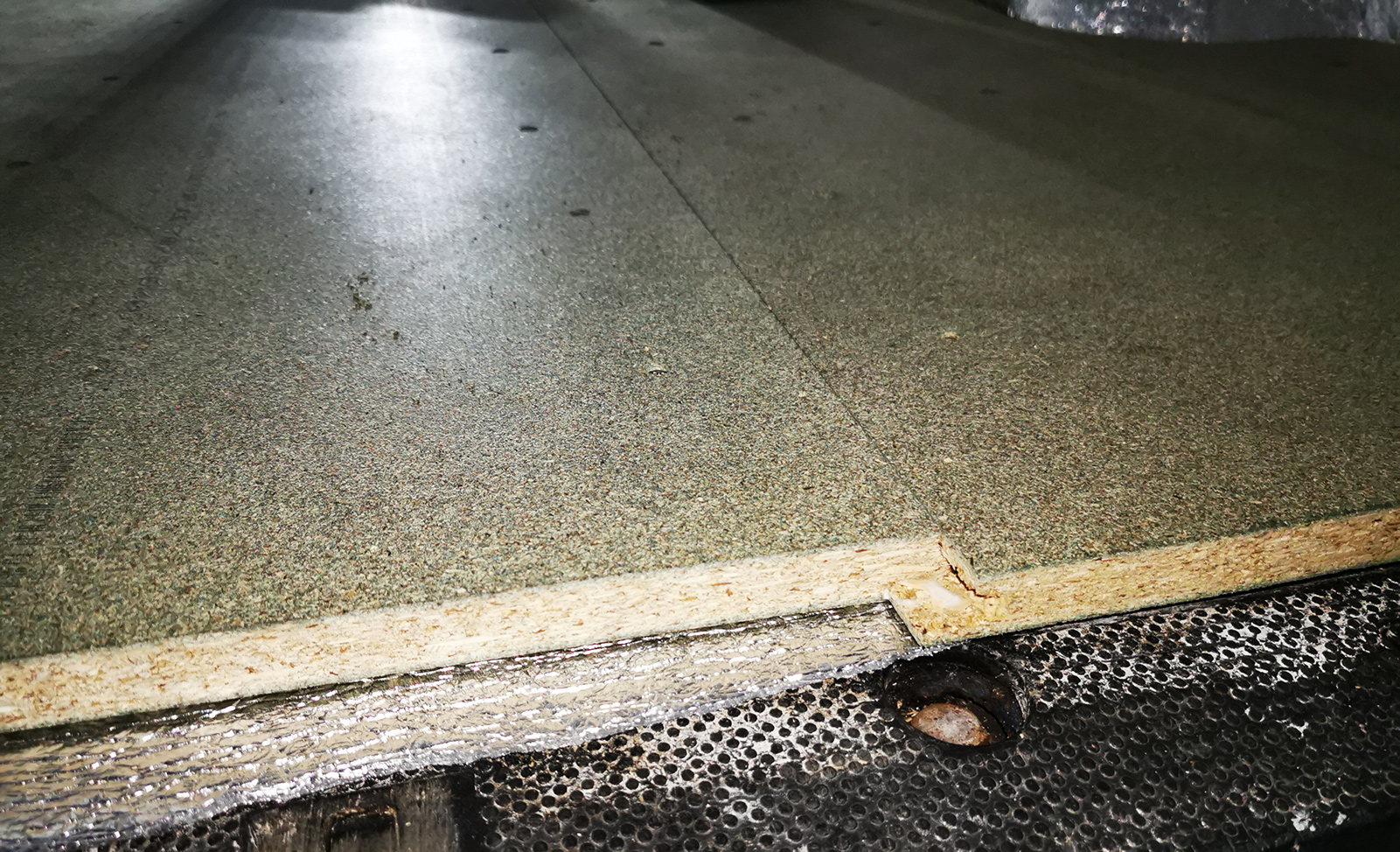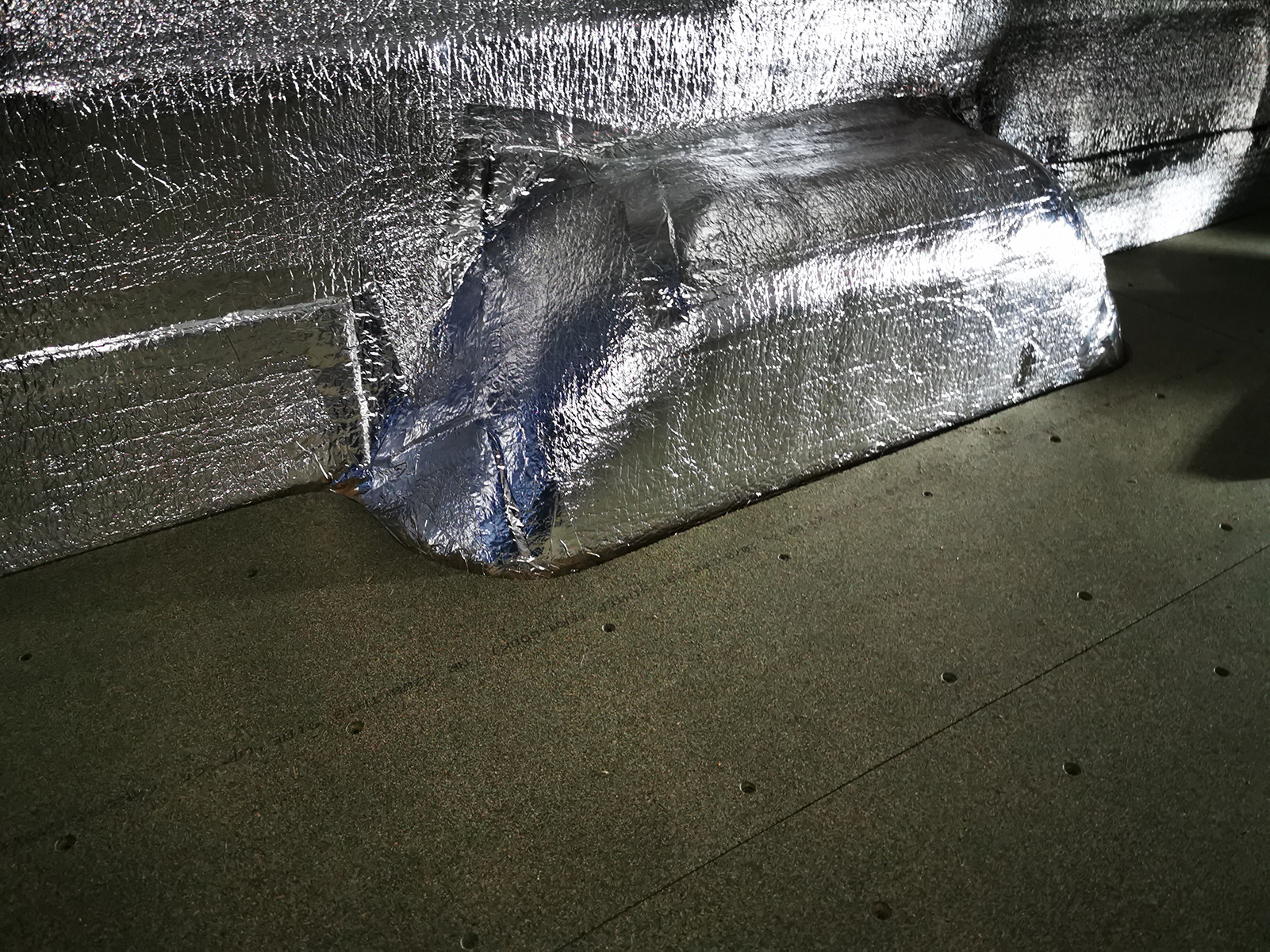Subfloor & roof hatch done
28 April 2021 at 8:41 am

This week, we got the floor down and started on the roof! It’s really starting to look & sound (!) like something!
My primary concern with the car has been to avoid moisture, so we wanted to retain a moisture barrier across the entire car. We’ve used Low-e and alu tape as this is a proven solution. Van floors are basically just sheet metal with a plywood board that is fastened using rivets. If you remove this floor, you’ll expose 30-something rivet holes that go straight to the moist underside of the car… So my idea was to keep the 12mm plywood, insulate over that and then put in a new floor on top of that. This will loose us some height, but I cannot stand upright in the finished car anyway. I’m 1.88cm (6"2’) but my wife still has good clearing to the roof.
First up, we applied Low-e to the floor and closed up all gaps. Now, only the doors are missing insulation.

Next, we added in the floor boards. I had a hard time finding anything thinner, so we ended up using 22mm floor boards that are moisture treated to be used on bathrooms. This thickness adds quite a bit of weight, but it was all I could find at the time. Covid & lockdown has made these things more difficult, so we had to go with what we could find. If I could choose, I’d use something half the thickness.

The floor board have overlapping seams that make it easy to lay them down and we’ll only use a simple vinyl floor on top of this. Once cut, we screwed the boards into the plywood beneath, making this a sandwich with wood, insulation and then more wood. I don’t think this is the ideal solution, but it works and we got it done? Looks good though and it’ll be plenty strong.

We fixed the skylight to the roof some weeks ago, but to place the final frame around it, we had to get started on the roof. The first textile we got was a black, woven material that did not stand up to a fire test. It was claimed to be fire proof, but it caught fire easily and based on how molten plastic was dripping from it, there was plenty of plastic in that mixture. One week later we picked up a thick, felt-like material. This is the same that is used in the traditional Norwegian “bunad”, so it’s pure wool and won’t catch fire. The thick felt is currently held up by staples, but we’ll remove those as we add the wooden ribs that’ll go across the roof.

All in all, a really good week despite us only spending a couple hours every other evening. We also got the car out of the garage tent, so now we’ll use that as a carpentry workshop while we can do things on the exterior of the car also. Good progress!
